| These are the two men who made the glass flowers. They
are Leopold and Rudolf Blaschka. Leopold was born in 1822 in what is now the
Czech Republic and he died n 1897. Rudolph was his son (1837-1939). | 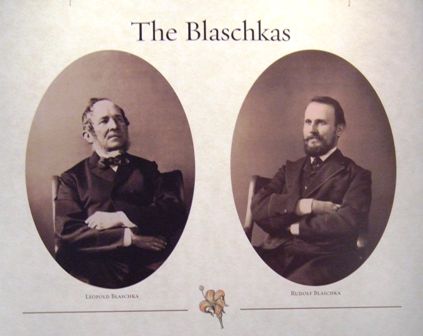 |
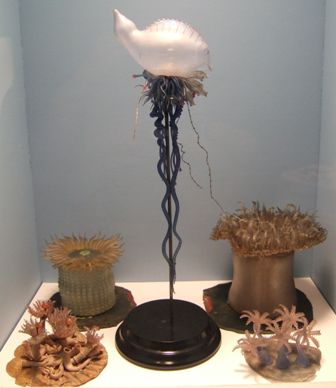 |
Leopold made his first botanical models in 1860 but from 1863 he specialised
in models of invertebrates, especially marine life. He was ably assisted
by his son from 1876 and they continued making them until 1890. Most were
made for the Natural History Museum in Dresden. |
| It was his flower models at Dresden that led to a
small commission to produce some botanical specimens for Harvard. This later
turned into an exclusive commission for Harvard which became their life's
work. For more information see the entry for Harvard University in August
2007 | 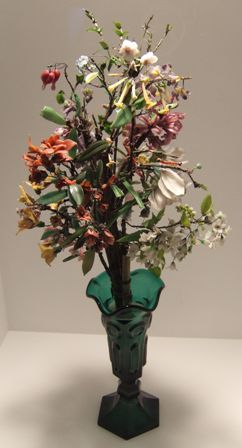 |
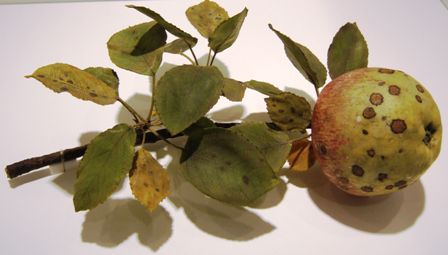 |
The collection here at Corning is just a small fraction of the 4500 models
owned by Harvard. The next few pictures show fruits attacked by fungi of
various types. They were used as teaching aids in botanical classes. |
| There are examples of pears, apples peaches on
display. | 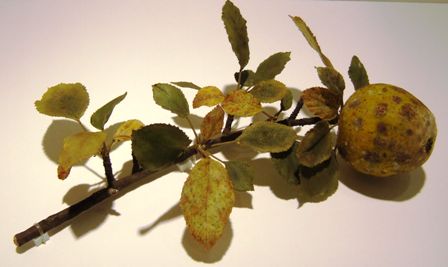 |
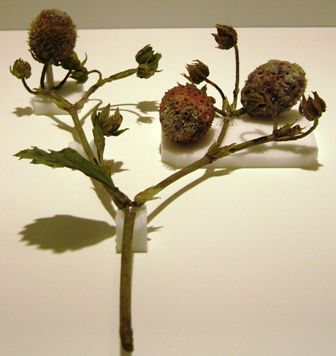 |
Even strawberries attacked by mildew and botrytis are modelled and look most
lifelike. |
| This is a pear which has been badly attacked. | 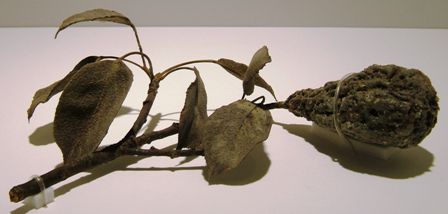 |
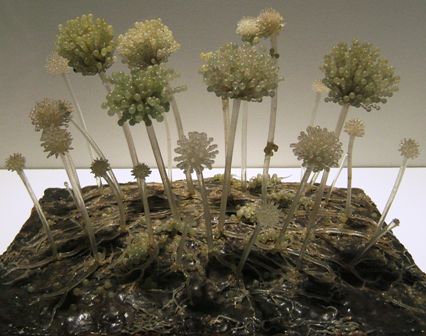 |
Here the mould spores have been greatly enlarged. The level of microscopic
detail shown is amazing even today and must have been revolutionary in the
university's teaching. |
| I think these are plums. Most displays gave the
scientific names but I am not a botanist. | 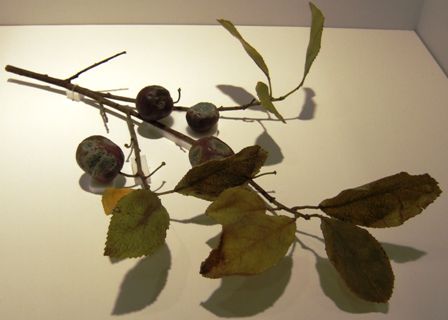 |
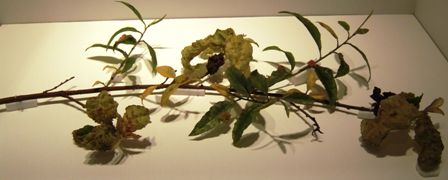 |
These are peach leaves affected by the peach leaf curl fungus.. |
| There are other samples of the work some showing the
sections of parts of the flowers and the complex root system. Just amazing
to think these are all made of glass. | 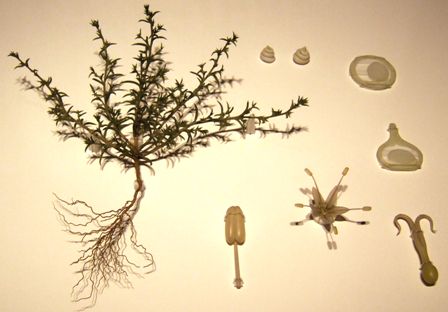 |
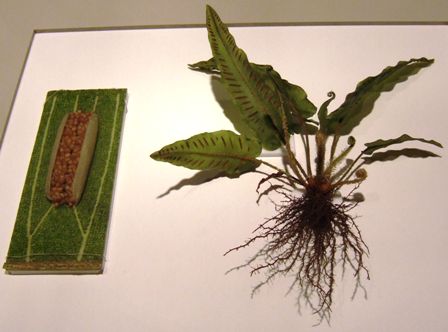 |
This looks like a fern with a magnified spore case. |
| This is an enlarged wood sorrel flower being
pollinated by a bumble bee. | 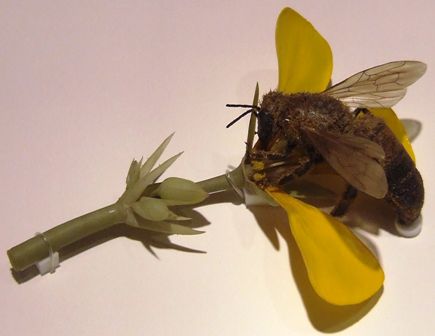 |
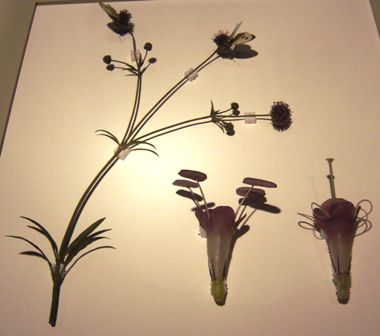 |
Many of the models made have the flowers enlarged to facilitate teaching
pollination and reproduction of the plants. |
| Despite the subdued lighting, and their age, some of
the flowers have retained their vivid colouring extremely well. Botanical
specimens prior to these models were dried samples and the colours soon
faded. | 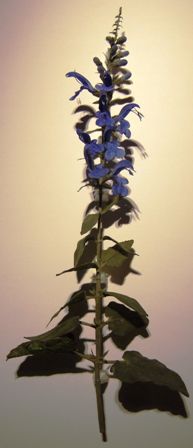 |
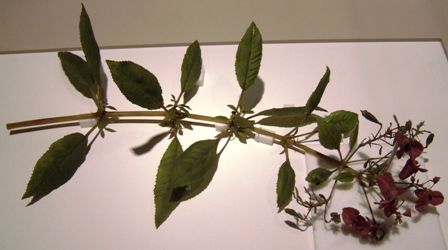 |
Another example of the exquisite artistry and skill put into these flowers. |
| And more models of the flower heads showing that these
are plants which capture insects. | 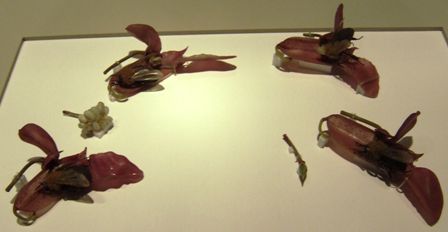 |
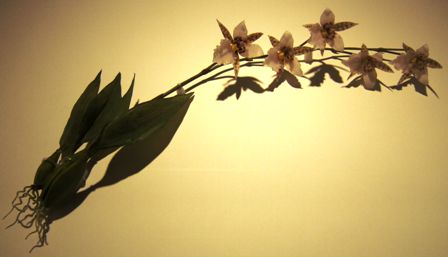 |
The range is enormous. These are orchids. |
| And this looks like the blossom from a tree. | 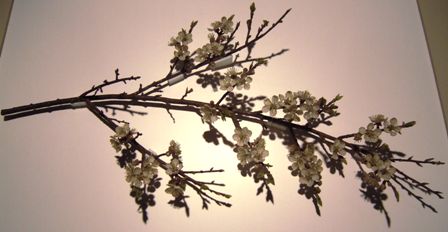 |
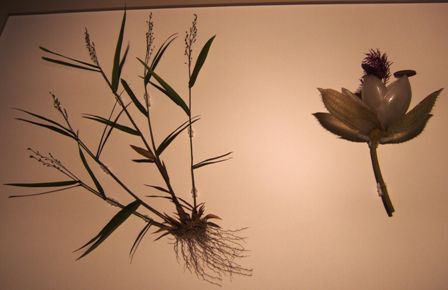 |
There are also samples of grasses, part of the much larger collection at
Harvard. |
| More fruits which are what made up most of this sample
collection.. | 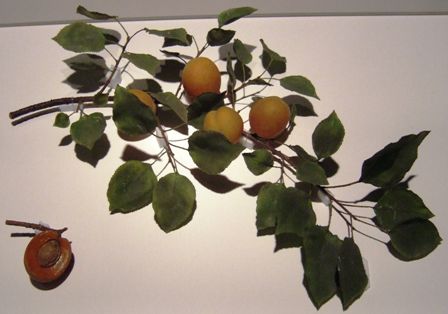 |
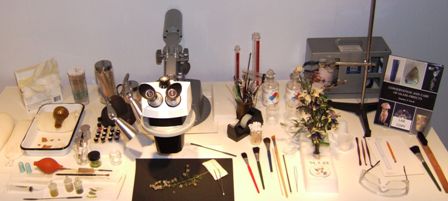 |
Over the years some models have been broken, and Corning has done much work
with Harvard in the restoration of the flowers and other glass objects. This
is a sample workbench and some of the tools, materials and paints used in
restoration. |
| Finally in a well lit case of its own was this
beautiful orchid and the question 'Is it real?'. The higher level of
lighting gives it away as being real but I'm sure some people are fooled
because the preceding displays are so realistic. | 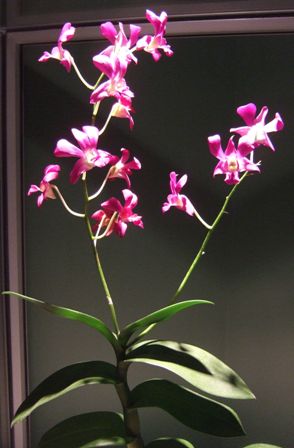 |
|